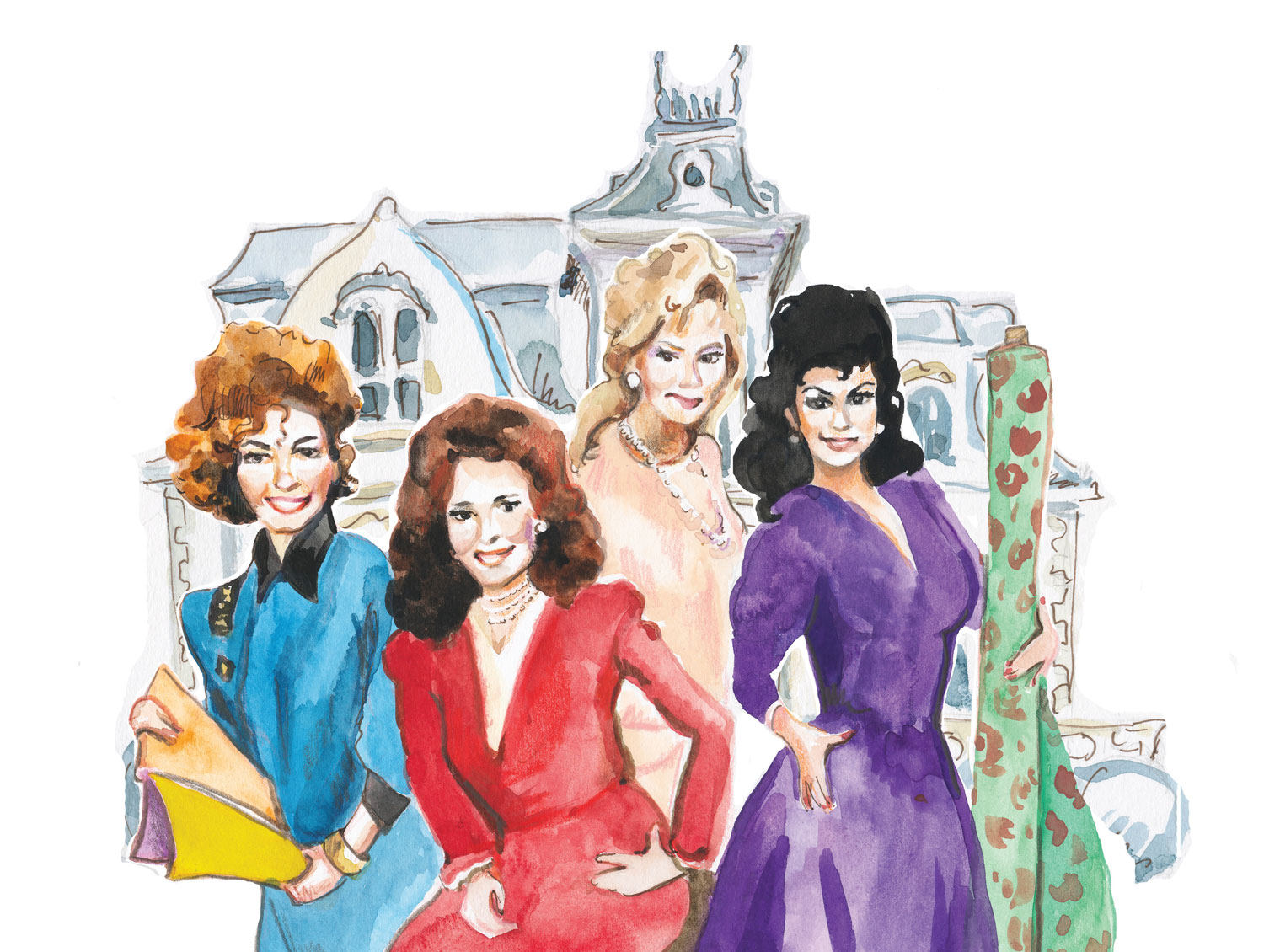
Illustration by Abigail Gray Swartz
Design professionals frequently boast heart-jerking origin stories—featuring, for instance, a seamstress mother whose stellar taste led them to decorate, or an Auntie Mame who introduced them to the life of aesthetics. I, however, had the four smart-talking women of Sugarbaker and Associates design firm.
This might be The Gayest Thing I’ve Ever Said (and trust me, that’s a competitive category), but my destiny was forged by Designing Women. It’s no exaggeration to say that the first fragile inkling of my future career occurred during CBS’s Monday night lineup.
In case anybody doesn’t remember (and in that case, I weep for you), Designing Women was a sitcom that ran from 1986 to 1993, conceived and produced by Linda Bloodworth-Thomason. It was set in Atlanta (although many of its exterior shots were filmed in Little Rock, Bloodworth-Thomason famously being a friend of the Clintons). The theme song was Ray Charles’s “Georgia on My Mind,” and the stars were Dixie Carter, Delta Burke, Annie Potts, Jean Smart, and Meshach Taylor. Yes, I know that after the fifth season, Burke and Smart were replaced by Julia Duffy, Jan Hooks, and, finally, Judith Ivey. But, as most will surely agree, seasons six and seven were not the connoisseur’s Designing Women. Anyway, it was hilarious.
But Designing Women was more than comedy. In addition to its groundbreaking depiction of professional women, there was its groundbreaking depiction of Southerners. For once, we weren’t the Beverly Hillbillies (which was actually a terrific show but failed to impact any of my life choices). On Designing Women, we weren’t portrayed as a bunch of alfalfa-sucking, rope-belted yokels with poor diction, hiccuping accents, and a peculiar fondness for gingham. We were, at last, urbane sophisticates with careers, college diplomas, and a pronounced gift for cadence. For a master class in oratory, just YouTube one of Julia Sugarbaker’s tirades. (My favorite, as well as my personal definition of unconditional love, is her “The Night the Lights Went Out in Georgia” speech.)
Without Designing Women, I’m not certain it would ever have occurred to me that a person could actually earn a living by creating beautiful homes. The women of Sugarbaker actually worked—unlike Doris Day in Pillow Talk or Lauren Bacall in Designing Woman. They labored over paint swatches and suffered the burden of returned merchandise. They delivered sofas, toted textiles, and pretended their clients were interesting. Their profession seemed glamorous and agonizing. In other words, it seemed real. And it also seemed open, by which I mean, their world seemed like a place in which a little gay boy like myself might fit.
Now, I don’t want to gild the lily here. In the years since 1993, I’ve been influenced by Madeleine Castaing, Renzo Mongiardino, and Gerrie Bremermann, among others. But if you were to look for the cradle of my design obsession, to name my earliest decorating mentors, you wouldn’t find them in Bunny or Charlotte, but rather, in Julia, Suzanne, Charlene, and Mary Jo.
Robert Leleux is the author of two books, The Memoirs of a Beautiful Boy and The Living End. His essays and articles have appeared in such publications as the New York Times, the New York Times Magazine, and the Huffington Post. He was previously the managing editor of Lonny Magazine and the editor of Domino. He is also the cofounder of the Southern Style Now Festival & Showhouse.
This article originally appeared in our Winter 2016 issue of Atlanta Magazine’s HOME.













